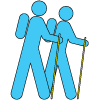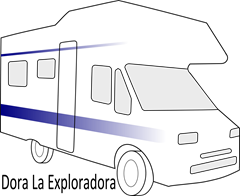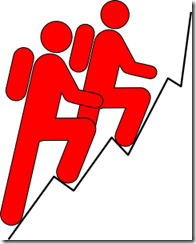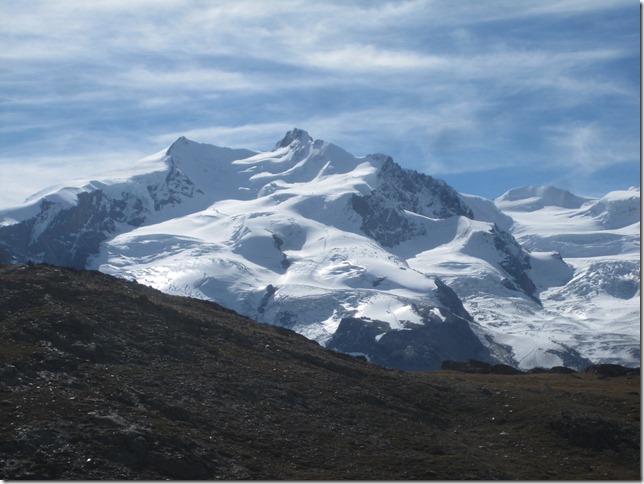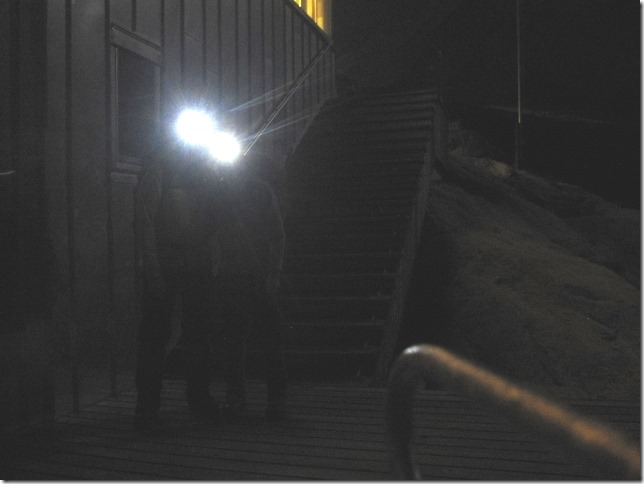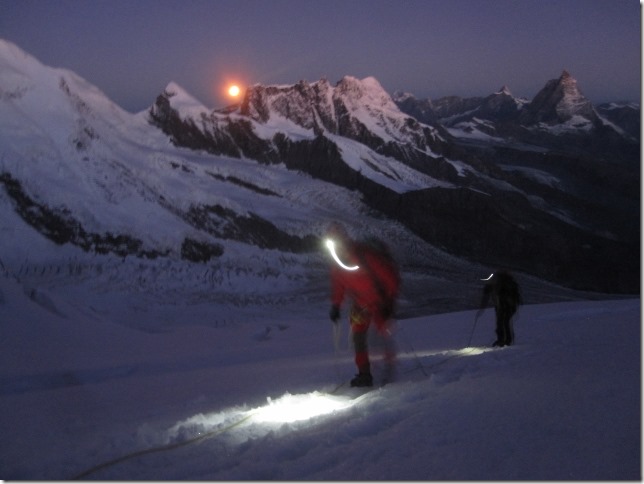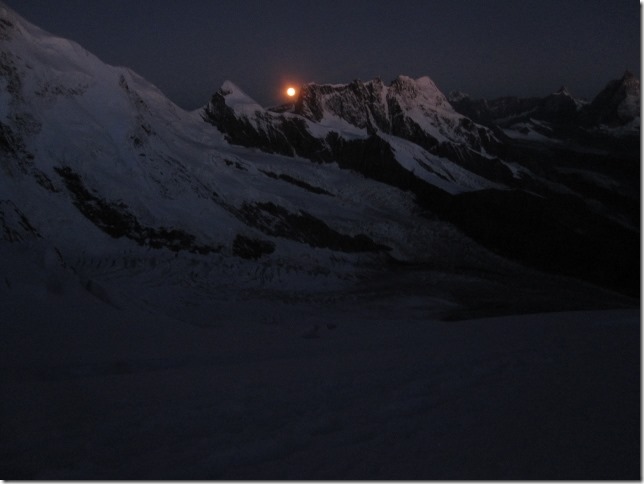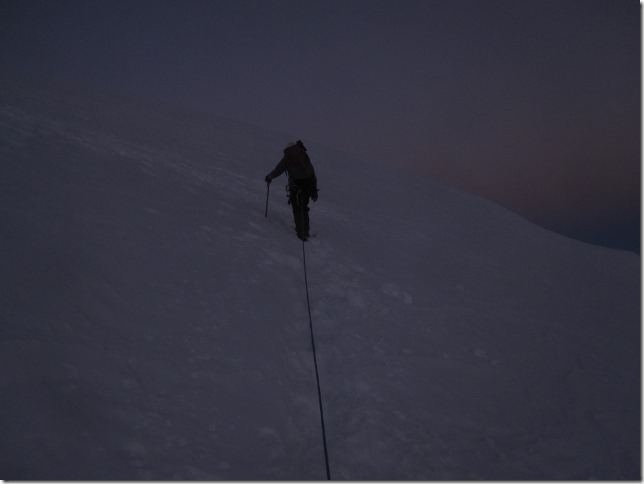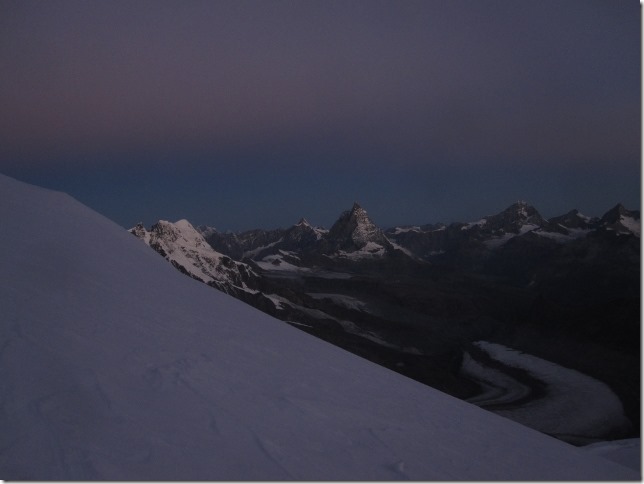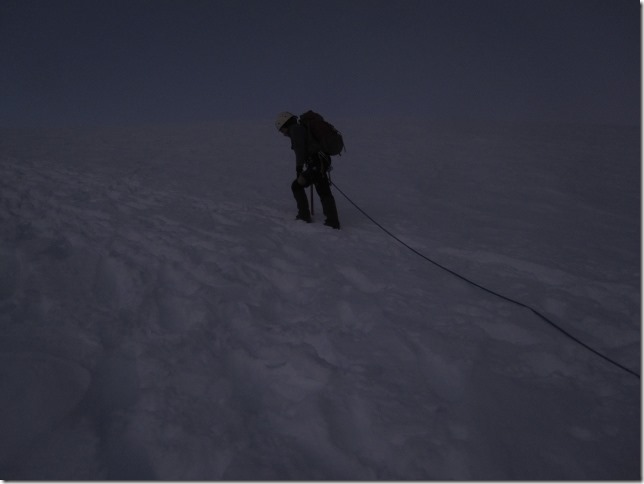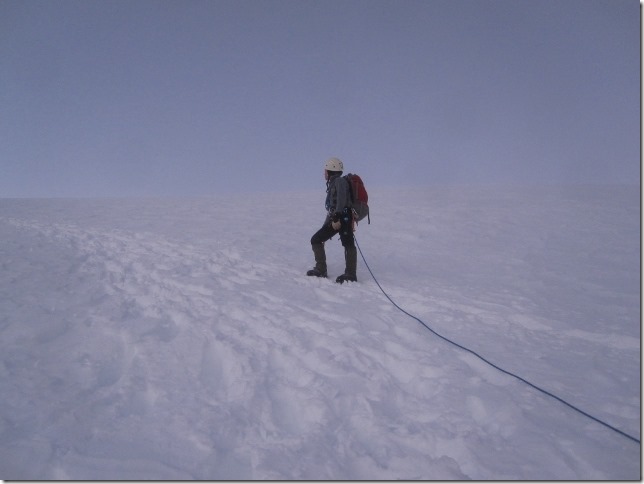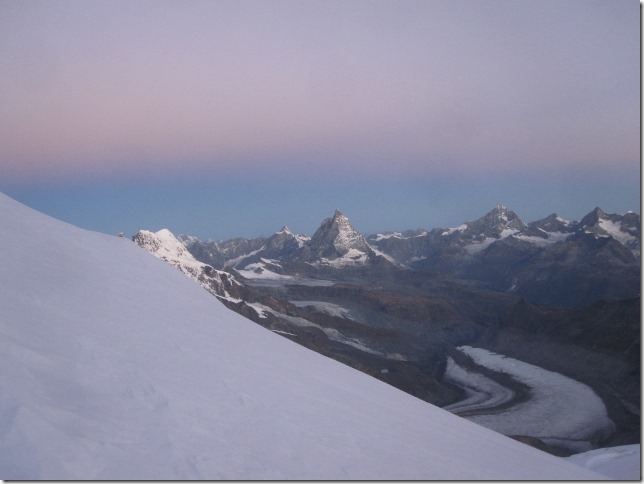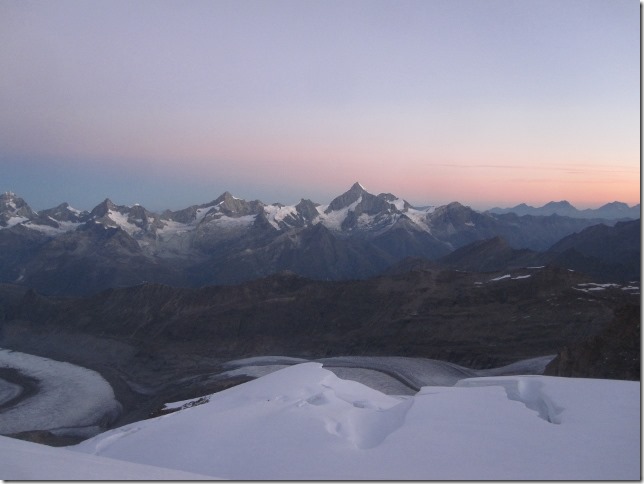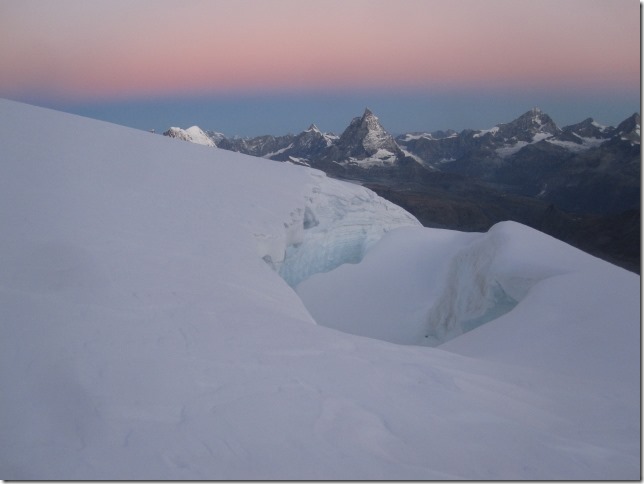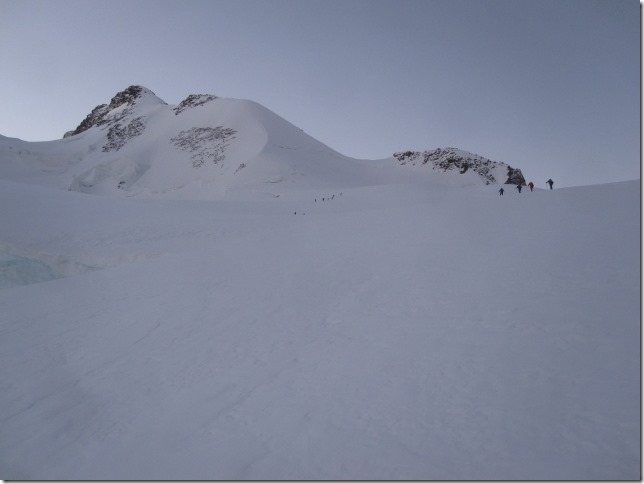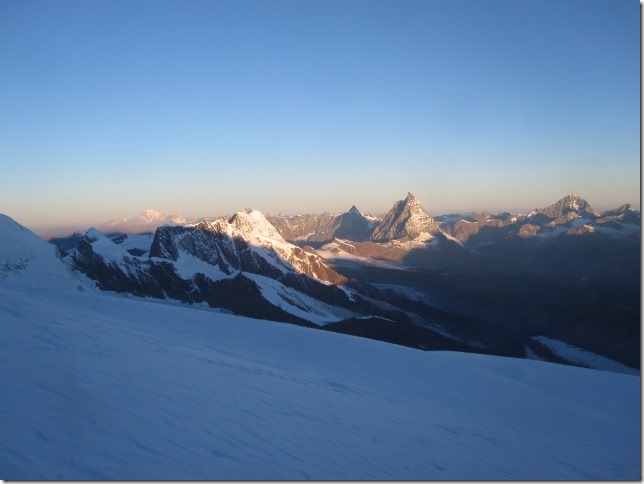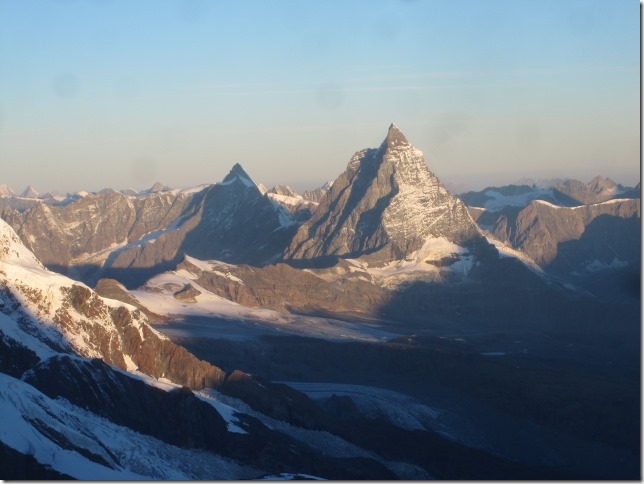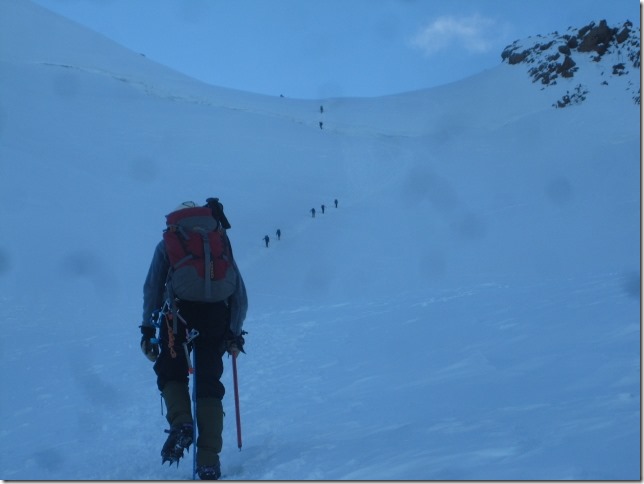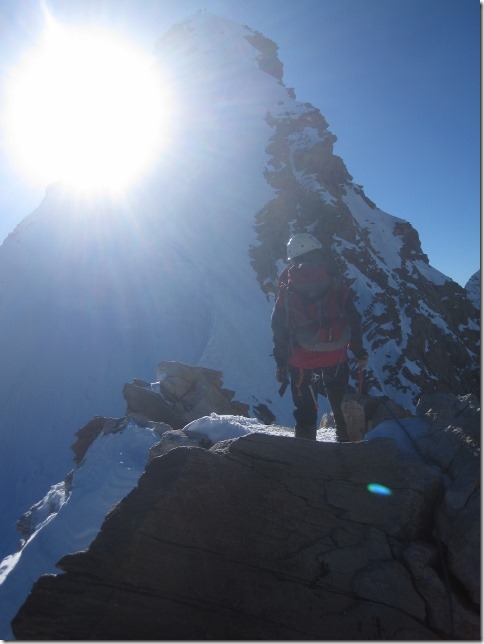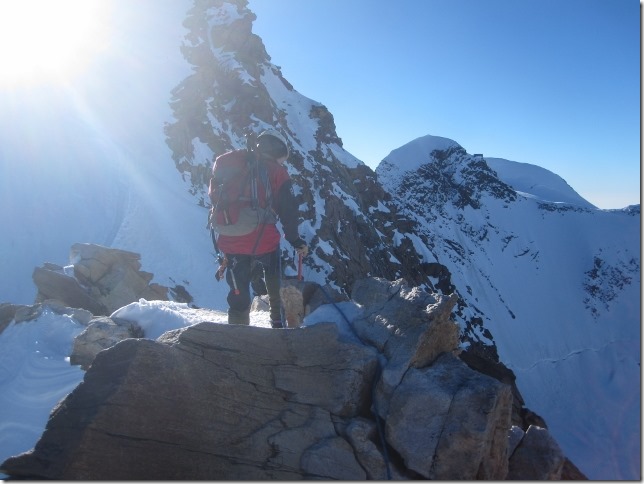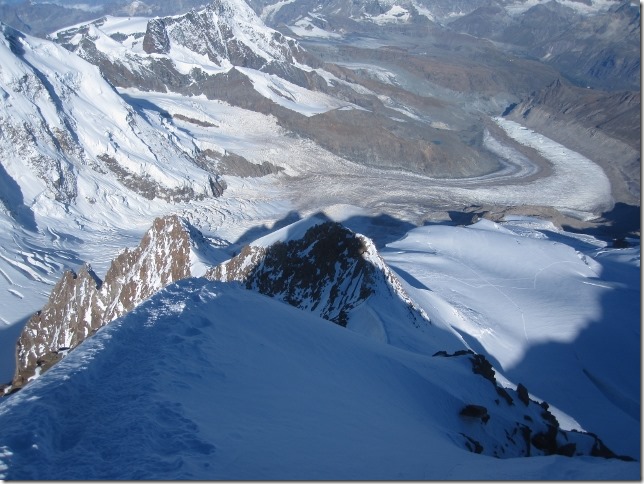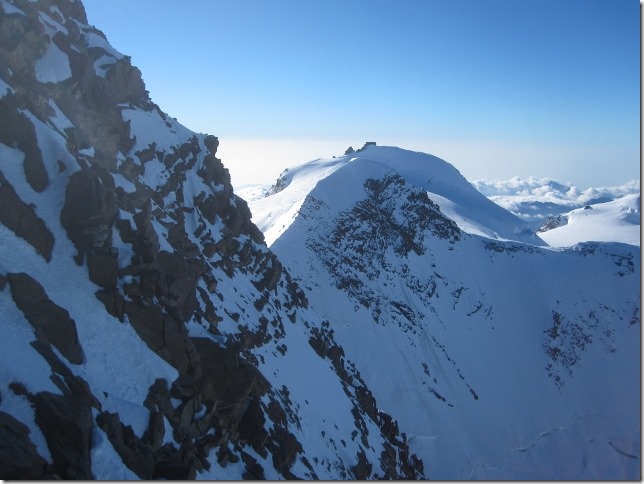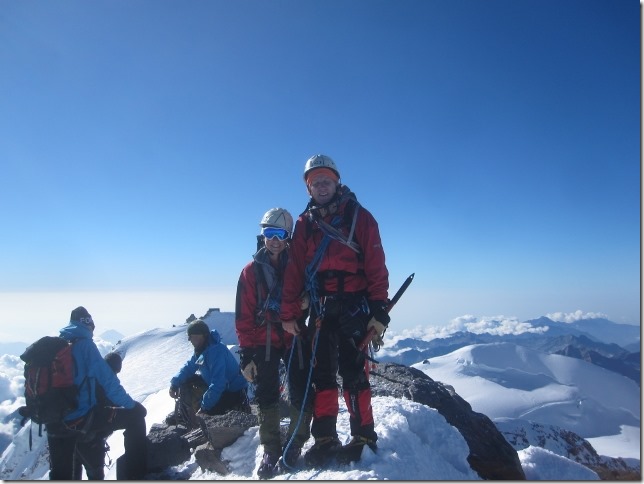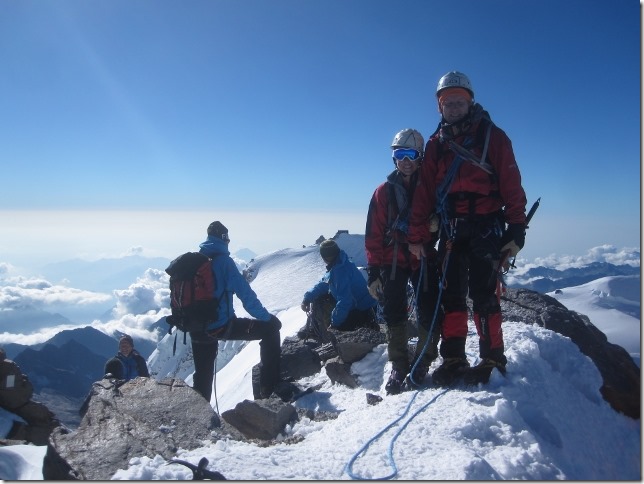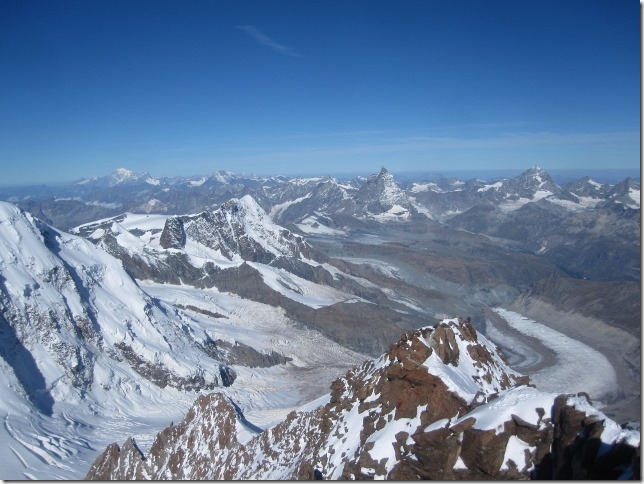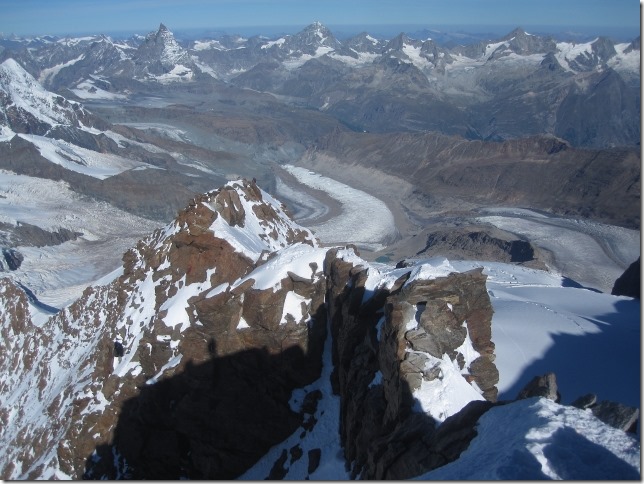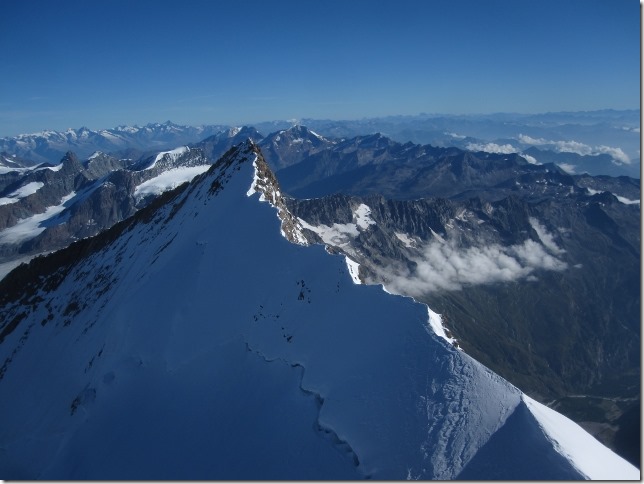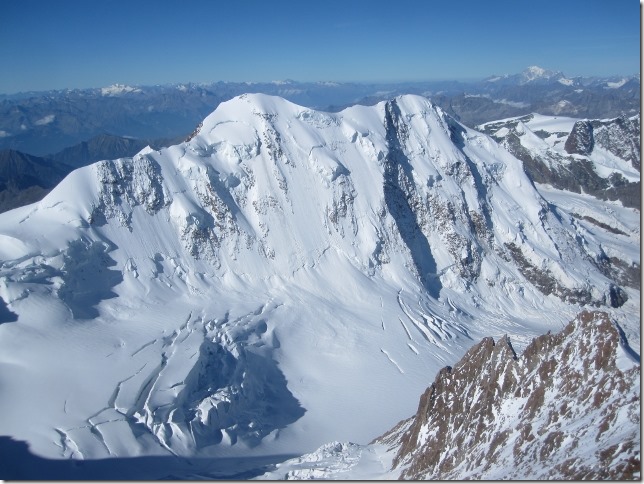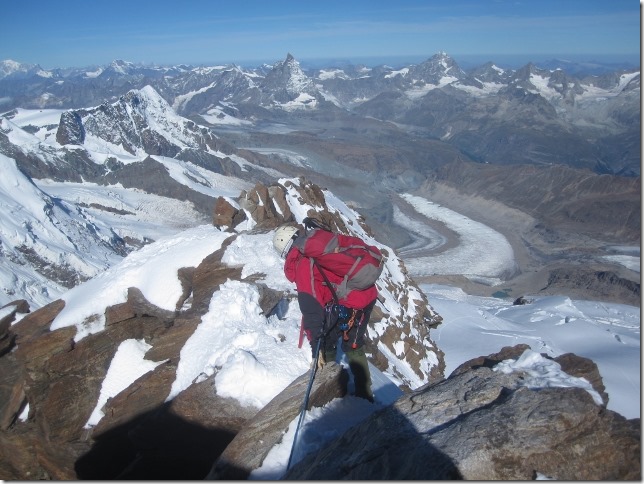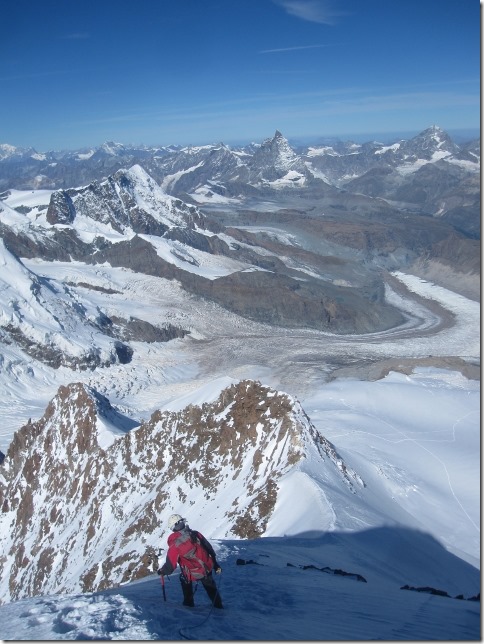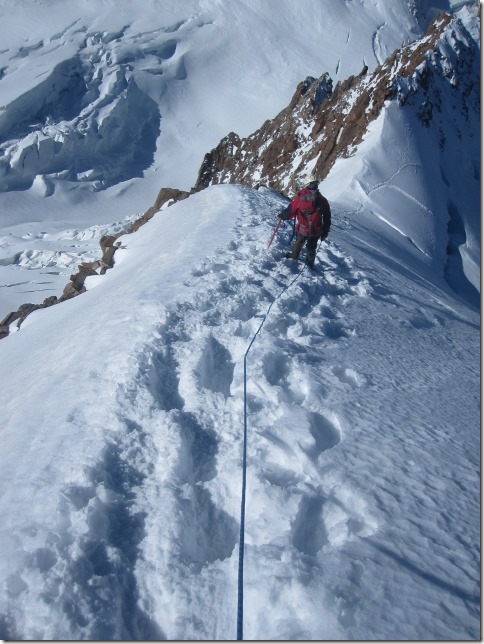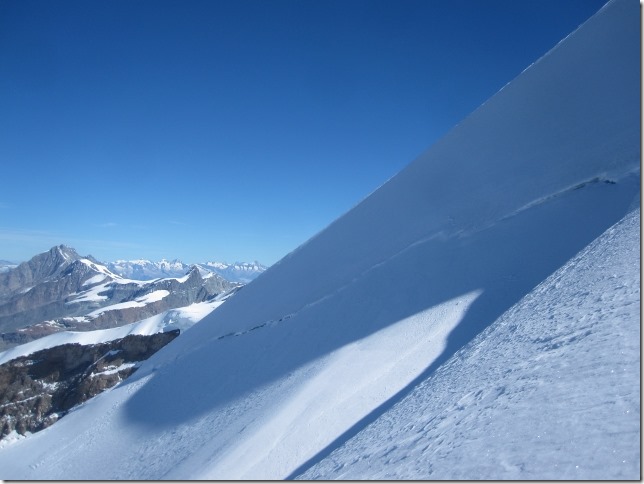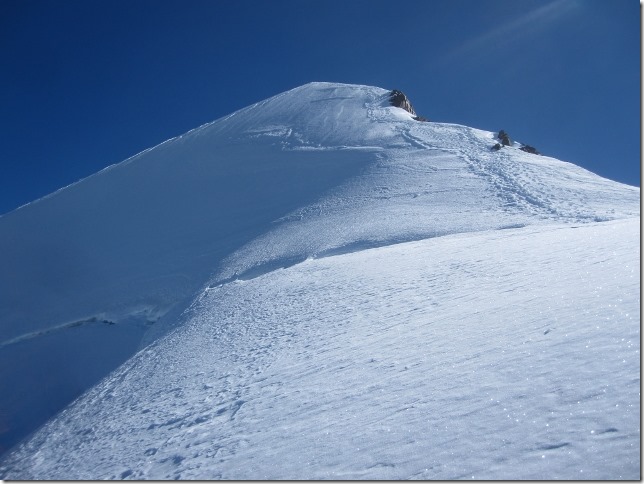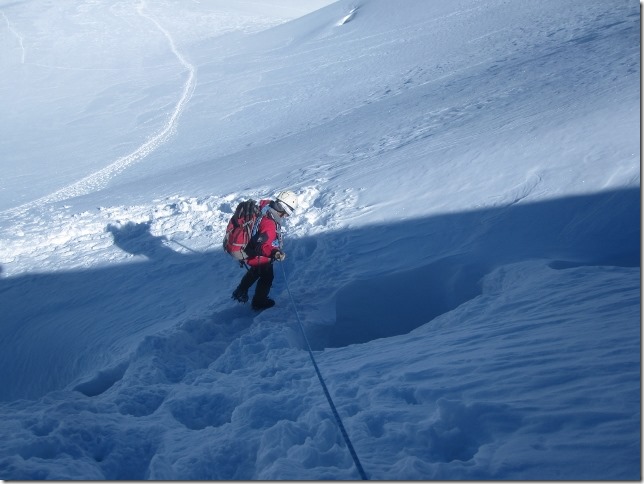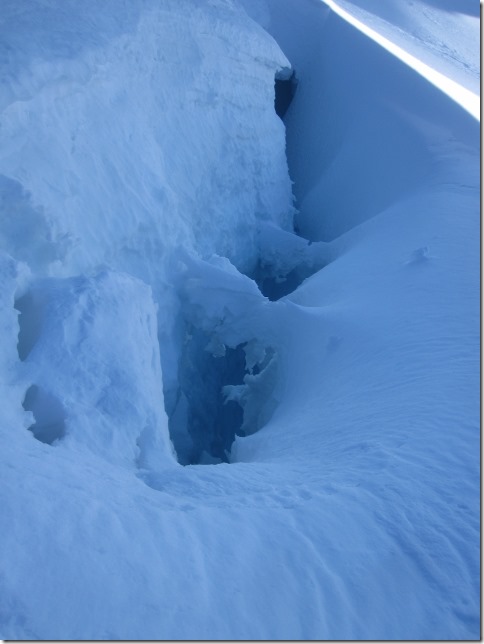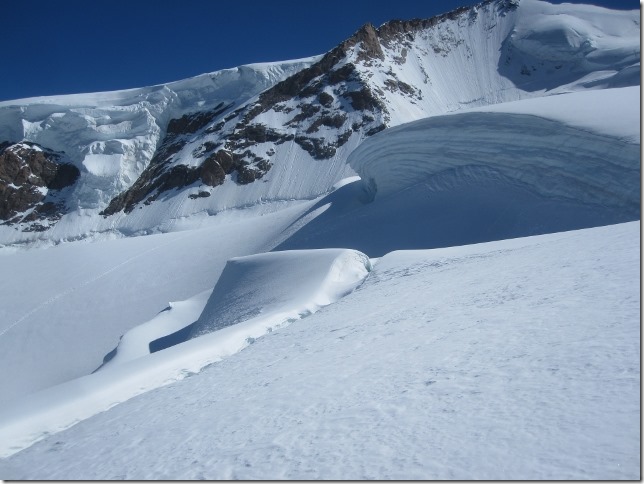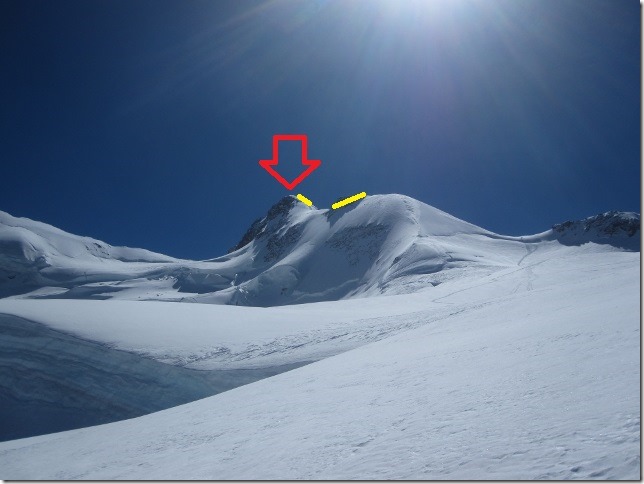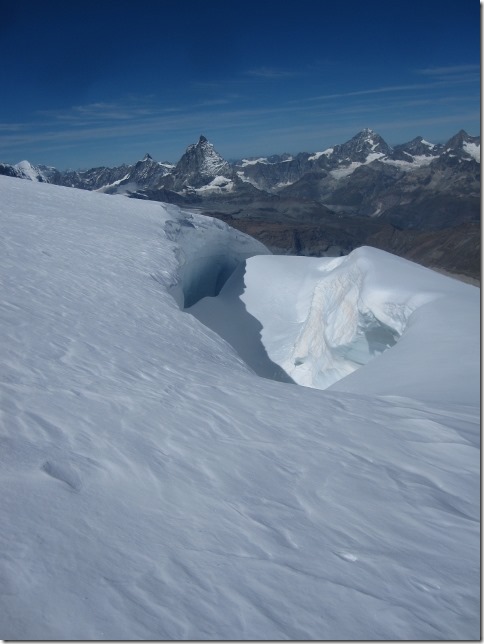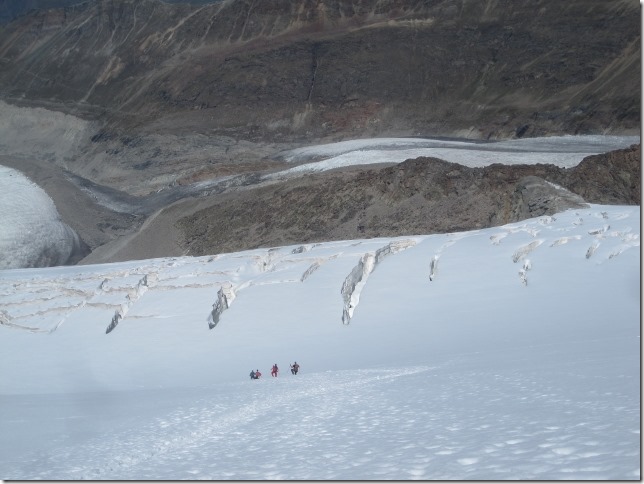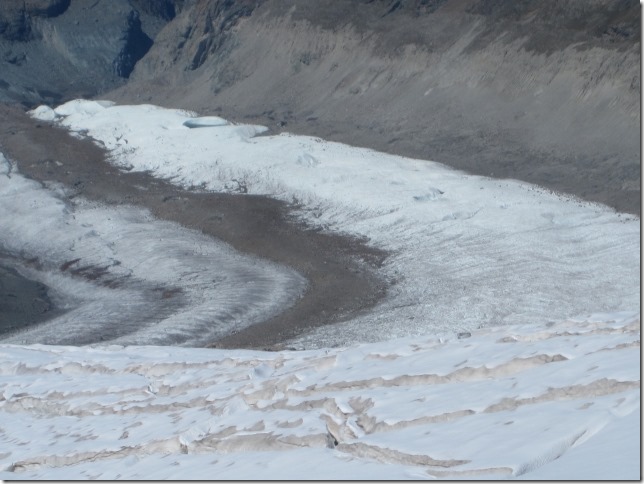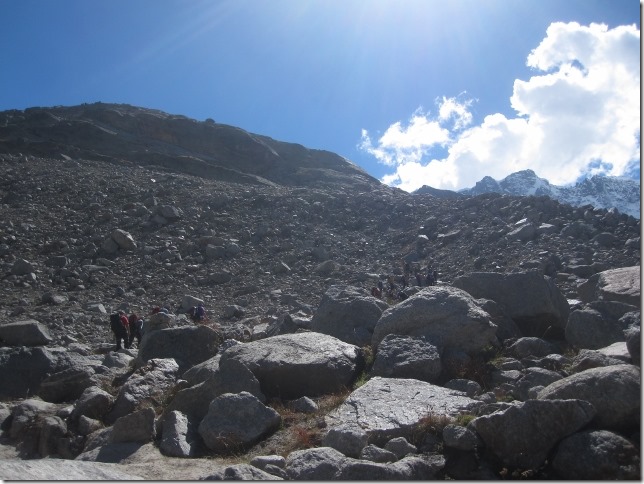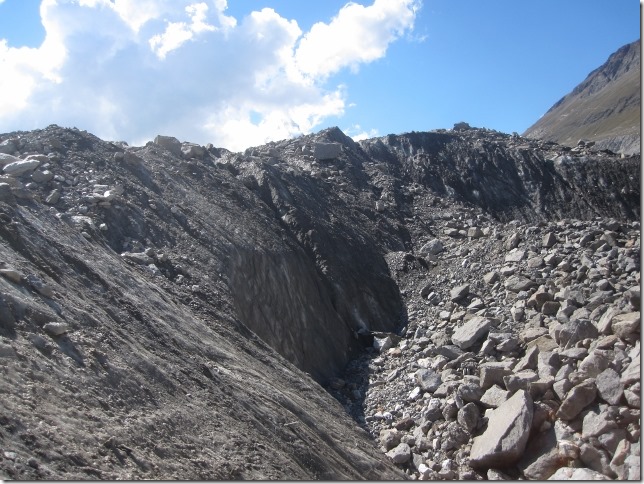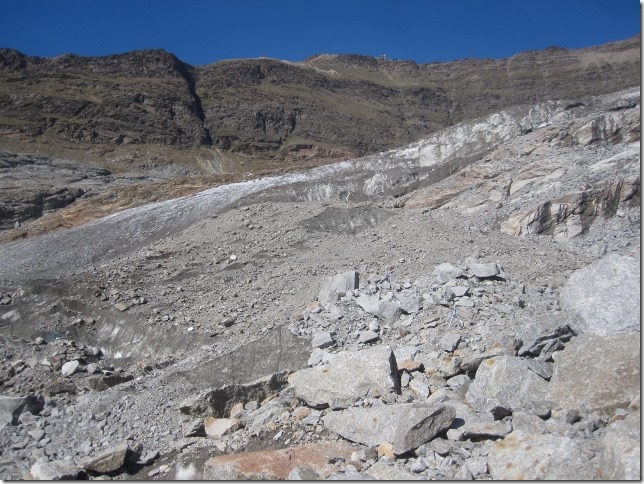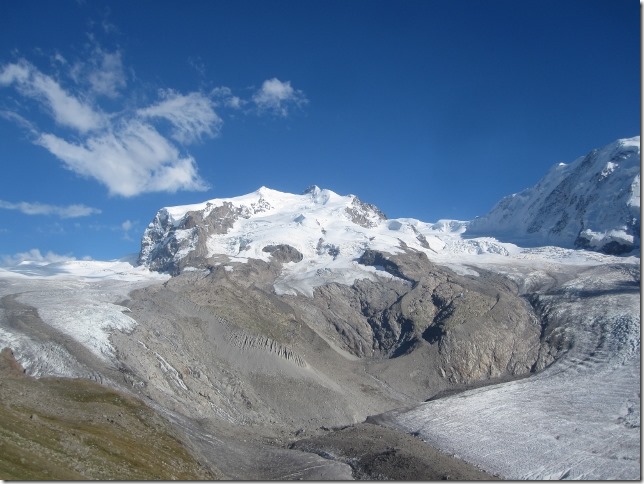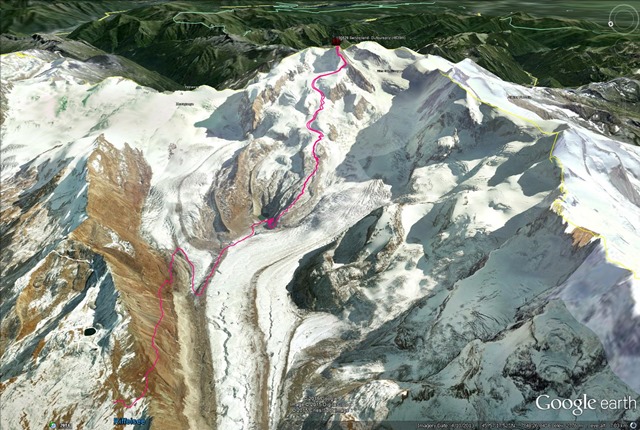This post describes my experience of climbing Dufourspitze, the highest mountain in the Monte Rosa massif.
| Come late September, Dora is up for sale.
If you or anyone you know is looking for a reasonably priced motorhome then please check out the following link; https://www.2wanderers.com/dora-for-sale/ or if you have any questions email us at; Thanks |
I heard about Monte Rosa mainly from Gary. He tried to climb it 15 years ago with his friend Marteen. Unfortunately, when they were only an hour from the top, Martin slipped down the snow slope and rescued himself a few metres before reaching the Bergschrund, the last crevasse on the Monte Rosa glacier. As a result, he injured his hand and they had to come back. It must have been such an scary experience.
Gary has also climbed Mont Blanc twice. Mont Blanc is higher than Dufourspitze by 200m but he has always described the latter as a much more challenging mountain. I liked the sound of both, the former for being the highest in Europe (well, if you exclude Russia), the latter for being so challenging. I thought this year would be the opportunity to do them both.
I always get a bit apprehensive the day before I climb a big mountain but this time, I started to get stomach crunches two days before. It is a weird feeling. It is a combination of; excitement about the challenge, scariness about the risk, curiosity about how we will cope, nervousness about the surprises we may find on the climb…
I wanted to know everything about the route; Gary brought the description and maps that him and Marteen used many years ago. He was also very helpful taking me through the route so thoroughly. In addition, I read a few posts on the website http://www.summitpost.org/ from people who had climbed it recently. You can never be over-prepared for a serious mountain.
We took the same approach as when we climbed Aneto. The day before the climb we re-watched our Alpine DVD, specifically, the section about moving together on a glacier. It is always advisable to rope together on a glacier, especially if it has crevasses which are covered by snow, Monte Rosa glacier is one of them. After watching the DVD, we practised roping up and making knots. It’s been a long time since we watched that video and we haven’t done anymore glaciers since, so I felt I had to re-learn everything again.
Another thing that made me feel anxious was the weather. The weather forecast predicted snow on the day we were due to summit. A brand new layer of snow on a glacier is not good news. But the lady at the tourist information officer in Tasch re-assured us the Monte Rosa website envisaged sunny weather. Perfect!
Climbing Monte Rosa takes a minimum of two days; the first day you climb to the hut, an easy and gentle three hours walk; the second day is the hardest, you have to climb 1800m, which should take between six to seven hours, of which the first four have to be done in the dark. The reason being you have to climb up when the snow is cold and hard, so you should start the climb no later than 2.30am. Quite an early start, quite an long day!
I didn’t sleep well the night before we left Dora, I was just too excited. The walk to the hut was nice and gentle. We started quite early so we had the rest of the afternoon to chill out. Quite a few people with ice axes and ropes were coming back from the mountain. That comforted me because it meant that the track to the top would be well defined and easy to find.
Dufourspitze was visible all the way up to the hut. I continuously looked at it and try to recognise the route. The fact that from afar I could see sections of the track made me relax.
We arrived at the hut in three hours and fifteen minutes with plenty of things to do before we finally relaxed; have some lunch, boiled some water (we were reluctant to pay the €10 that cost 1.5l of water at the hut), prepare all the gear for the next day and, more importantly, check out the route to the glacier, as this was mainly on rock and had to be done in the dark.
By the time we finished checking the route, lots of people had arrived at the hut, quite a few also ready to climb the mountain the next day. Having people going up at the same time as us was also re-assuring. I was no longer scared, I couldn’t wait to get on with it.
The night before, I put the alarm clock at 2.00am but I woke up a bit early, so we got up and by 2.20am we were ready to go. Another dozen people left at the same time as us.
These white dots are Gary and I with our head torches on, just before we left.
Because we were wearing torches, the path was fairly visible. Checking out the route the day before was worth it, we already knew roughly where to go. Having full moon was also very helpful. It was funny to watch the other people, they looked like a bunch of fireflies dancing in the dark, with their headlights on.
We were at the edge of the glacier in an hour and fifteen minutes, fifteen minutes early than the stated time. That was good, we were keeping up a good pace.
I felt confident walking on the glacier, crossing the crevasses wasn’t problematic. The track was obvious. Sometimes I had to jump, but the crevasses were narrow enough for me to reach the other side easily.
After half an hour going through that minefield of crevasses, the glacier turned into a smooth snow slope, getting gradually steeping as it got higher. I kept going through the route mentally; ‘we must have climbed only 100m by now, still 1700m to go’. I knew it was going to be hard, but no matter how much you know, it is only when you are there that you realise the magnitude of your effort. And, it is six hours of this. In these situations, I stop thinking about the physical discomfort and carry on walking, like if I was on automatic pilot, step by step, at steady consistent pace to save energy for what is to come.
I’ve mentioned in previous posts we are not the fastest walkers but speed is not the key in mountains. In fact, speed can be a potential hazard if you run out of energy quickly. So we don’t care if most people are in front of us. As long as we can see where they are going.
I was so engrossed in my own thoughts that Gary had to call my attention to the full moon which sat just above the mountain ridge. The views were startling. It doesn’t matter if we are unsuccessful in climbing the mountain, the effort is already worth it. Absolutely beautiful.
We made the most of the stop to eat some chocolate to boost those sugar levels and have some water.
Four guys followed us most of the way up, they also stopped when we stopped.
I couldn’t believe we were already so high. The mountain scenery at dawn was stunning. I had not seen anything like it since we climbed Kilimanjaro in 2012. That was another long day, we started at 1.00am and summited at 9.00am, I remember so clearly despite being such a long time ago.
Suddenly, I started to feel I was out of breath. I very rarely get altitude sickness, only in Kilimanjaro and not until we reached 4600m. But here, we must must have been only at 3500m. So that was a bit of a concern. If I was having altitude sickness I could have a problem.
I warned Gary, who advised me to slow down more, take shorter and more frequent steps and drink more water. It worked. It could have been because the path was getting steeper and I forgot to adjust my pace.
Feeling much stronger, I relaxed and enjoyed more of this landscape that changed by the minute, as the sun was getting higher.
Stunning colours.
I could be here for hours contemplating this gorgeous skyline.
It wasn’t until then, with daylight, that I realised we were still surrounded by crevasses. The view of those enormous white holes was petrifying.
Getting closer to the summit gave me more strength, although it was still three hours away. The worst was still to come but I tried not to think about it too much. I would only worry when I got there.
Meantime, the mountains were already full of light. It is amazing how quickly the colours changed.
The Matterhorn looked, as usual, impressive. However, I’ve heard it is boring to climb, as the mountain is simply a pile of rocks and scree. Certainly, not a pleasant walk; very homogenous and monotonous, therefore, not worth it.
I remembered continuing assessing where we were in relation to the map. At this point, probably just below 4000m. The last 600m were the hardest, the steeper and more exposed. I was physiologically getting ready for the final push.
The saddle coming up was the turning point. From there, the true climb up to the summit started. How long would it take? Keep walking, keep walking.
I was very intrigued to see the Bergschrund, the biggest and last crevasse of the glacier and, roughly where Marteen had the accident. We took no photos of it when we crossed it but we did on the way down. I remember crossing it was not too bad. The snow bridge was nice and solid. The conditions would be very different when we came back, in four hours time. That is the reason for starting the climb so early, leave it too late and you would be crossing those bridges in the afternoon, where the snow would be already melted by the heat of the sun.
We got to the saddle at 7.30am. It was so bright. We stopped for water and we put some extra layers on. Ridges tend to be quite windy and mountain wind is always chilly. After a five minutes rest, we pressed on.
How was I physically feeling? Very tired but I had to carry on. The urgent feeling of reaching the summit compensated for the physical exhaustion.
The west ridge looked intimidating. From here, I kept boosting myself, ‘come on, you are almost there’.
The steep climb to the top of the bridge took us 45 minutes. We then had in front of us the section I feared most; the rocky ridge. It was wide enough for one person at the time and had an immediate fall of hundreds of metres either side. We had to climbed it with crampons on. I am not very good at climbing with crampons, crampons are made to walk on snow, not on rocks. But there are situations like these, when you cannot take them off and on, it is too dangerous. Therefore, climbing with crampons is another skill that the alpine mountaineer has to develop.
I went over the rocks as best as I could but I didn’t like the way I handled it; I was out of control, my moves weren’t coordinated, it was all quite messy, I really felt out of my depth here. Gary reminded me to use the rope to create natural belays, for me and for him. I’d forgotten, there were so many things to remember, meantime the immediate fall underneath us…
I looked back and realised we were only half way. ‘Come on, we had to move on quickly, we are taking too much time on this’ said Gary.
I hate these times when you are running out of energy but have to hurry up. But somehow, I pulled myself together and I do. What kept me going? The thought of getting off that ridge as soon as possible.
All the people who started at the same time as us were coming back. I couldn’t avoid feeling a bit discouraged.
And finally, we got to the top!! It was 9.30am. It took us two hours to go over that bloody ridge and seven hours since we left the hut, still within the estimated time. So congratulations to us both!
The Dufourspitze summit is very small, there is only space for half a dozen people.
Did I feel happy or relief? Not sure. I was a bit stressed because of the thought of having to come back via that ridge again. Whilst everybody was cheering, having their lunch or resting, we took the mandatory photos and headed off. The sooner we start, the sooner we finish.
I would look at the panorama photos back in Dora. First, let’s get out of here.
What was the problem on the way up the ridge? Lack of coordination and communication between us, due to the fact that we hadn’t done many ridges like this. So this time, we had a plan; I would lead, Gary would belay me, and I would help him to find hand and footholds.
Every step, every body lift up, every stretch, every single move was taking my last bits of energy.
Changes of angles in the slope forced me to change the angle of my body, I felt like a seventy-year old, it was so costly to change body positions.
And finally, an hour later…‘Gary, rocks are over’!
We handled the return much better; we were so much quicker and felt really confident on the rock. We had been a proper team.
At this stage, I hadn’t clicked on we had reached the summit yet. I was too worried we had such a long way to go and I was so drained, every move took double the energy, I had to make an effort I had to make an effort.
But I was so glad the ridge was over.
I couldn’t believe we were up there a couple of hours ago.
Here it comes, the last challenging section; the Bergschrund crevasse. As expected, the snow bridge was already quite soft. Gary improvised a belay with his ice axe. If I had fallen, the ice axe would have stopped the fall.
Once again, we crossed the crevasse successfully. From a safe position, I looked inside the crevasse, it was so beautifully creepy.
At this point, the worst was over. The return was simply walking, walking and walking; first on snow, then over the field of crevasses, then on boulders. Most people stop at this stage and stay another night at the hut, rest and continue the next morning. But we weren’t going to do that; we just wanted to get back to Dora and finally relaxed.
Dufourspitze, we were there three hours before. The arrow indicates the actual summit. The yellow lines, the ridge.
The conditions of the snow were much harsher than we anticipated, it was very soft and sluggish, which makes walking much harder. It was so hot, we were baking in our wet and winter gear so we stopped to change into summer T-shirts, un-rope and get rid of the helmet.
Except for a coffee and a few bits of chocolate, we hadn’t had anything else to eat. But quite frankly, I didn’t fancy a bite. The desire to get off the mountain was more powerful than the desire to eat.
I was surprised when I saw the four guys coming down behind us, I thought that everybody would have got to the hut by now, that we were the last ones on the mountain.
In daylight, the glacier revealed its severe appearance. Don’t worry, we didn’t cross that field of crevasses, the route went off to the left. Imagine how difficult it would be to climb this mountain in winter or at the beginning of the Summer, when there is not track yet defined. It would be so easy to go off route!
Almost with my tongue out, we kept pushing to get to the bottom of the glacier at 13.00, the advised time to avoid stepping on soft snow bridges.
Once we got there, even though it meant taking an extra fifteen minutes, we stopped and roped up again. We didn’t want to have a fatal accident in the last minute.
And finally we reached the boulders, we were only one hour away from the hut.
Changing terrain conditions was a relief for my knees.
Although I wasn’t any quicker. Being so exhausting required double concentration. It is precisely at that stage when it is much easier to make a bad step that could lead to a twisted ankle or, worst, a fall.
I looked back to Dufourspitze again. Strangely, at that point, I felt nothing yet about having reached the summit. By now, Gary and I would have been proud of ourselves for such an achievement. But personally, I couldn’t, I didn’t have energy to celebrate yet.
We got to the hut at 14.30, an hour later than anticipated. After picking up the stuff we left at the hut, we had a quick lunch, 10 mins rest and continued down to the train station, we wanted to catch the 18.30 train back to Dora.
The walk down was painful, specially the last half an hour when we had to hurry up to catch the train.
It was only when we got to the station, when I started to comprehend the effort and the magnitude of our achievement. Clearly, we weren’t the most experienced ridge climbers up there, but somehow we coped, even better on the way back. I felt I couldn’t get any further, but I did.
At every stage, my body felt heavier, at every move, my energy was reaching minimum levels. Only the power of the mind kept me going.
And we finished the climb, in reasonable time. These situations teach me that a lot of the time, ‘I can’t do’ means, ‘I can’t be bother’. If you want, you can.
That day I grew a bit more as a person. I got to know myself a little bit better, I am a bit stronger than I think I am.
Thanks Dufourspitze for such an amazing life time experience.
SM
29/08/15
